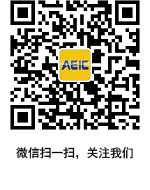
Prof. Aimin Liu
Tianjin Port Engineering Institute Co., Ltd. of CCCC First Harbor Engineering Co., Ltd., China
Title: Research on New Testing Technologies of Island Tunnel Engineering of Hong Kong-Zhuhai-Macao Bridge
There is no experience for reference in many testing technologies of Hong Kong Zhuhai Macao Bridge. It is not reasonable to copy the general specifications of water transportation and port field completely. The test should be carried out according to the relevant specifications and the actual situation. The control value of the test can be appropriately broken through or relaxed based on the analysis and calculation. Based on the project of Hong Kong Zhuhai Macao Bridge, this paper expounds the key construction and monitoring technologies of many subsea immersed tube tunnel projects, such as deep steel cylinder rapid island building technology, foundation dewatering combined with surcharge preloading technology, steel cofferdam testing technology, underwater installation real-time monitoring technology of immersed tube tunnel, underwater loading test technology, island tunnel transition section testing technology.

Prof. Jinfang Hou
Tianjin Port Engineering Institute Co., Ltd. of CCCC First Harbor Engineering Co., Ltd., China
Title: Offshore Cofferdam Construction Technology with Bagged Soil Solidification
With the construction needs of construction projects, construction involving land reclamation works, artificial islands and docks has increased so that it is necessary to build a lot of seawalls and embankments. Embankments were constructed conventionally with riprap breakwater or hydraulic fill sand with a huge need of sand and stone. This is neither environmental nor economic method. So it is urgent to use cheap underwater silt resources to build embankments. Offshore cofferdam construction technology with bagged soil solidification is to directly take soft seabed soil to mix with stabilizing agent (e.g. cement) to form a uniform flow mixture and fill it into large-size geotextile bags. These bagged soils are then placed by layers to form an embankment. This paper focuses on the engineering characters of bagged soil with low dosage of cement, researching on the influence factors of strength, proposing that the bagged soil has a higher shearing capacity and higher water content and has a good integrity with the geotextile bag. Meanwhile, the construction technology for bagged soil solidification was also studied to establish a mixing system and a filling system and established a practical construction technology. Application has made a good embankment with bagged soil solidification.

Prof. Yuhang Wang
School of Civil Engineering, Chongqing University, China
Title: High Performance Wind Power Structures base on Steel-Concrete Composite Technology
Wind power is a renewable and clean energy, which has been developed a lot in China in recent years. At present, offshore wind power and onshore wind power in low wind speed zone are the important development direction of wind power new energy in the future. In order to form a new wind power structure standardization system with high performance, low comprehensive cost and strong market competitiveness, therefore, a series of studies has been carried out by Chongqing university. This report mainly introduces the research results of four aspects of Chongqing university - the proposed four new types of wind power tower structure system, the developed two kinds of new floating foundation systems which are applicable to the far sea and deep sea areas, achievements in research on performance of concrete-filled steel tubular (CFST) members for offshore wind power foundation and development of integrated analysis and design procedures for fixed foundation of offshore wind power. The aforementioned research results can provide technical support for the development of China's wind power energy and promote the development of China's wind power industry.

A. Prof. Dr. Law Teik Hua
Universiti Putra Malaysia
Title: A High Engagement Training Method for Hazard Detection at Construction Site in Malaysia
Construction workers’ and the supervising consultant’s ability to identify and assess risks is acquired through training and experience. This ability is among the key factors that determine the behavior of the workers under their supervision and the workers themselves which determines their safety. Yet researchers have questioned the effectiveness of conventional safety training. This research tested the hypotheses that the safety training in a high engagement session would be feasible and more effective, in terms of workers’ learning and spontaneous identification of hazards including assessing construction safety risks, than would equivalent training using conventional methods. Twenty-six subjects were tested with high engagement image flashing tests twice a week for eight sessions. The tests results showed significant improvement in their ability to detect hazard towards the end of the sessions, although all the subjects were already trained in safety by conventional methods. High engagement image flashing method was more effective in terms of maintaining trainees’ attention and concentration. This method of training was found to be more effective, especially in the context of slips, trips, falls, collapsing trenches and crushed by or caught in between type of hazards. Given the need for improved training and the advantages of training using high engagement image flashing method, incorporation of it in construction safety training is strongly recommended.






